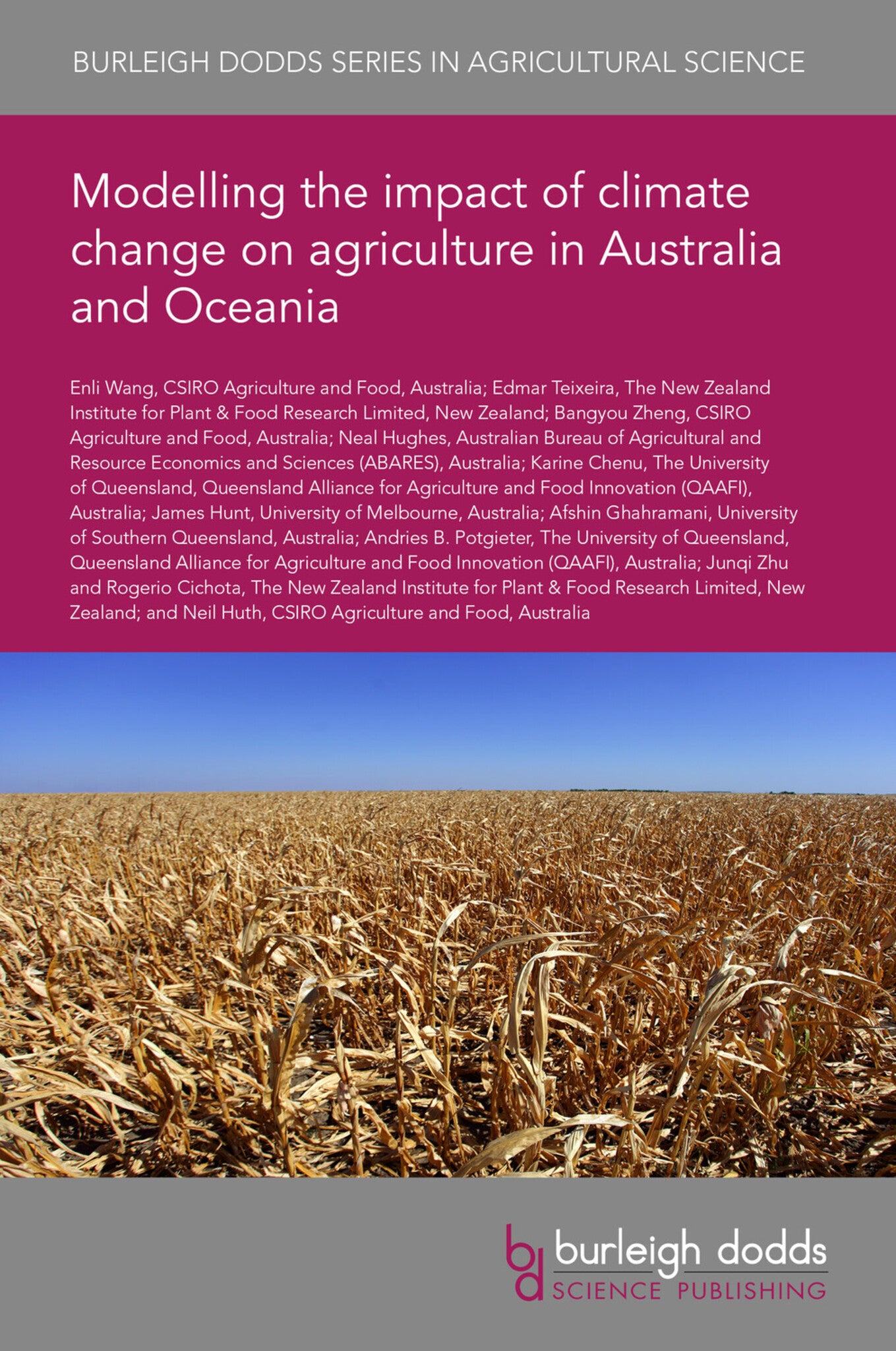We're sorry. An error has occurred
Please cancel or retry.
Modelling the impact of climate change on agriculture in Australia and Oceania

Some error occured while loading the Quick View. Please close the Quick View and try reloading the page.
Couldn't load pickup availability
- Format:
-
15 May 2023

In the past few decades, the Oceania region has experienced a general trend of rising temperature, increased rainfall variability, declining rainfall in parts of Australia and New Zealand, and increased rainfall, particularly extreme events in other parts of the Oceanian region. These changes pose challenges to agriculture, forcing agricultural management to adapt. Systems modelling has played a key role in understanding how climate variability and change impact on agricultural systems. This chapter summarises the climate change in the recent past and future projections for the Oceanian region, briefly reviews how agriculture has responded to past climate changes, and how systems modelling has helped to quantify impact of future climate change, evaluate adaptation strategies and influence policy. Case studies in Australia, New Zealand and Papua New Guinea are presented and future research needs for modelling are discussed. Web links for further information of relevant research and applications are provided at the end.

TECHNOLOGY & ENGINEERING / Agriculture / Sustainable Agriculture, Sustainable agriculture, TECHNOLOGY & ENGINEERING / Agriculture / Agronomy / Crop Science, SCIENCE / Global Warming & Climate Change, Agronomy and crop production, Climatology and climate modelling, Climate change, Agricultural science

- 1 Introduction
- 2 Past climate change and future projections
- 3 Challenges to agriculture
- 4 Agricultural systems modelling
- 5 Modelling the impact of climate change: case studies
- 6 Future trends in research
- 7 Conclusions
- 8 Where to look for further information
- 9 References



